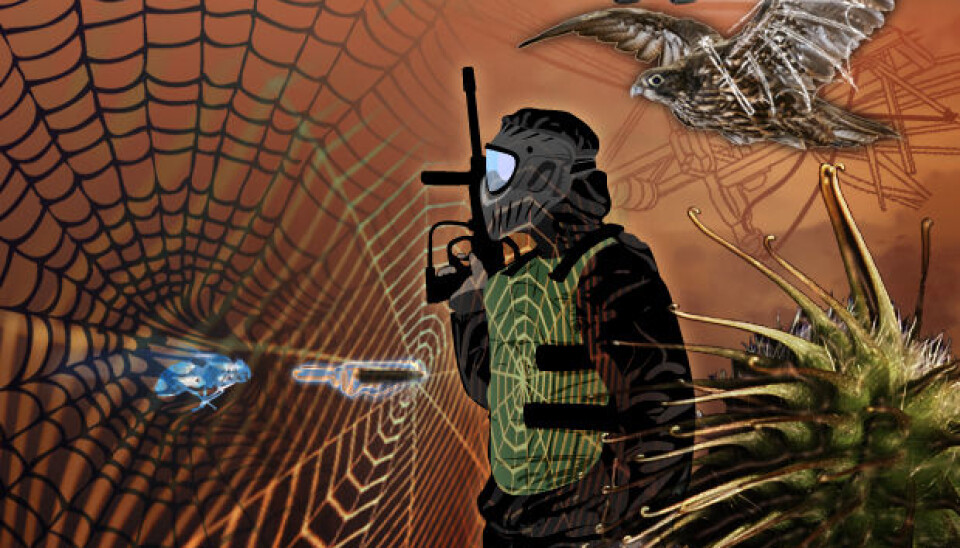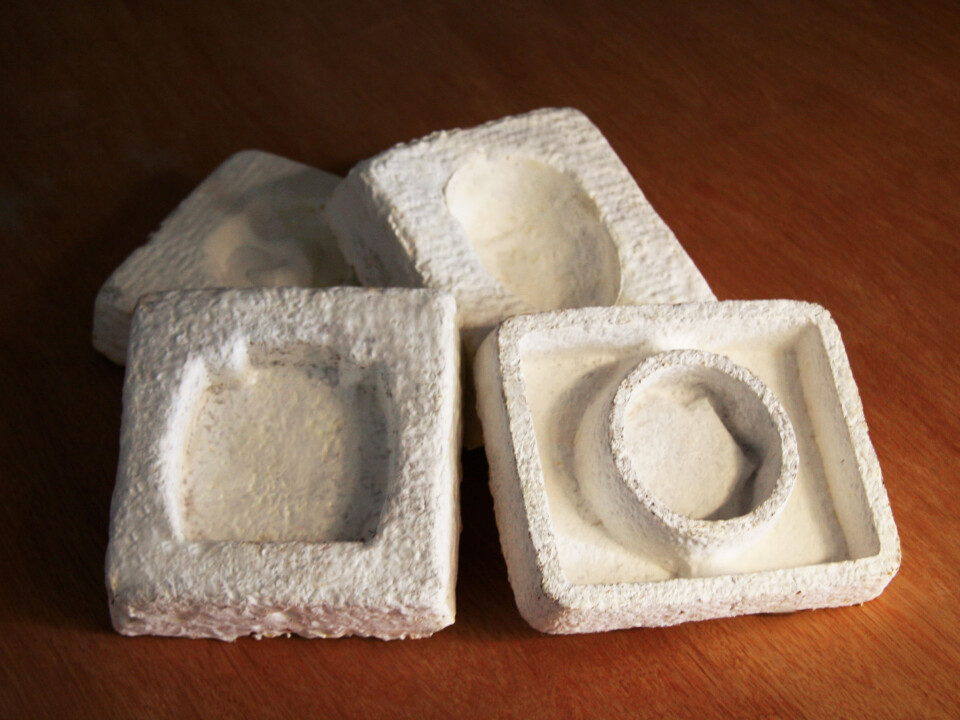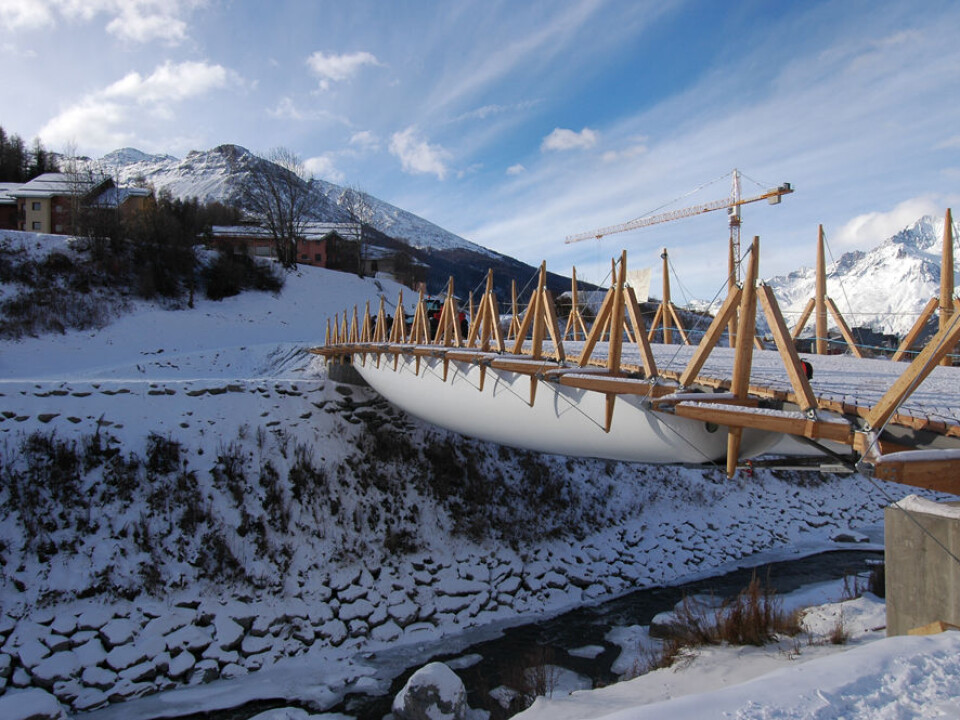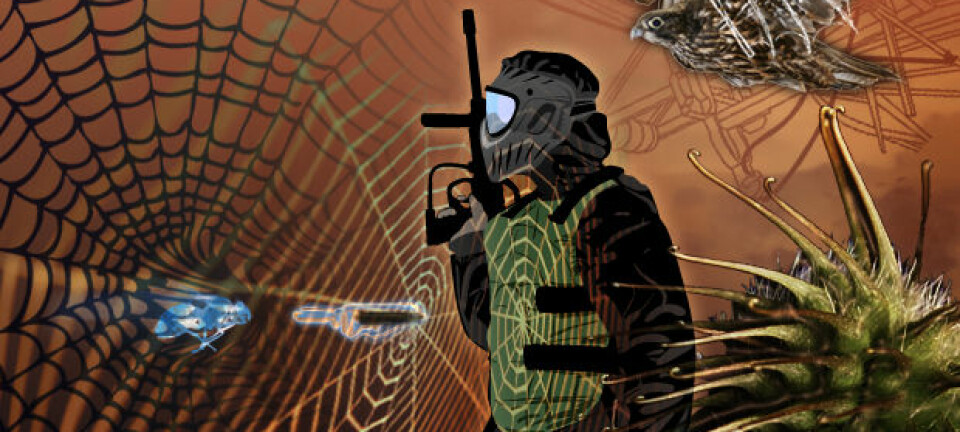
Top 10: The best copies of Nature (Part 1)
Here's the first five of ten examples of how new technologies can be created by copying the science of Mother Nature.
Bionics, the creation of technology inspired by Nature, is nothing new.
Stone Age man copied Nature by wearing the fur of slaughtered animals to keep warm. And Leonardo da Vinci copied birds when he drew his famous sketches of flying machines 500 years ago.
But it is only recently that bionics has developed into a fully-fledged science. Associate Professor Torben Lenau of DTU Management at the Technical University of Denmark has compiled these examples of high-tech inventions inspired by the natural world.
No.10 High-rise building ventilated like a termite mound
In Zimbabwe's capital Harare lies the Eastgate Centre – a large mixed-use building that is ventilated and cooled in a natural way, just like a termite mound out on the savannah.

"Termite mounds have constant humidity and temperature inside, regardless of the climatic conditions outside. It is controlled simply by air exchange," says Lenau. "Cooling is achieved by opening certain ventilation channels, and the same principle is used in the Eastgate building. Warm air is expelled and replaced with cooler air drawn up from below ground."
The building is made of materials with a high heat capacity, so that heat generated by men, machines and the sun is taken up by the construction without any appreciable rise in the air temperature.
In the evening and at night, warm air is vented out through the chimneys while cooler air is drawn up from the bottom of the building and through cavities in the floor slabs until the building's materials are cooled sufficiently in preparation for the next day. The walls and windows of the building are angled and constructed in such a way that solar heating is kept to a minimum during the summer.
No.9 Mushrooms replace polystyrene foam
Polystyrene chips are a popular form of packaging material for consumer goods, but disposing of them is problematic. At the waste management centre, it is treated as a material for combustion, since it doesn't pay to recycle it.

This is obviously not environmentally friendly, since a lot of oil is used to produce polystyrene and a lot of greenhouse gases are emitted. Another problem is that polystyrene decomposes very slowly, so it can persist in the environment for many years.
That is why Ecovative Design has created a sustainable replacement. They have made a material consisting of the part of a mushroom that grows underground – the so-called mycelium – which can be used as an insulation and packaging material.
"They take seed husks or straw, put it into a mould and moisturise it," says Lenau. "Then they inoculate it with mycelium, seal the mould and put it in a dark place for a week. In the mould, the mycelium digests some of the organic feedstock and binds it into a structural material. After a week the material is heated to about 65 degrees Celsius to stop the growth, and then it looks like polystyrene foam."
After the mushroom material has been used as packaging, it can be composted.
No.8 Self-repairing balloon bridge

In Lanslevillard in the French Alps, skiers cross the river by way of a 52 metre bridge, whose load is borne by an air-filled balloon. In designing the bridge, the architects had the challenge of protecting the balloon from deflating if a leak or puncture occurred.
"This was achieved by making it self-repairing, and the idea came from studying vines of the kind that Tarzan used to swing through the jungle on," says Lenau. "These vines are very long structures, so they are vulnerable to damage and liquid loss. But the problem is overcome by fluid-carrying layers inside the vine that contain particles which congregate around any hole in the surface and quickly reseal it."
This same principle of having a fluid that can quickly seal a leak or puncture is used to prevent air loss from the balloon supporting the bridge, he explains. The inner surface of the balloon has a semifluid coating that quickly flows into any gap or hole, and seals it.
No.7 Chemists copy mollusc superglue
Mussels prefer to live where the water is rich in oxygen, such as in tidal zones. To avoid being swept around in the surf, mussels attach themselves to rocks and other surfaces by means of byssus, which is secreted by a gland in the foot.

"Mussels secrete certain substances in the foot that is in contact with the rock, which function as a glue. It's an extremely powerful glue – a superglue in fact – which scientists are now trying to identify," says Lenau.
Barnacles, which attach themselves to marine structures in a similar way, also have a trick that glue manufacturers would like to copy.
Barnacles may look permanently fixed, but they can in fact dissolve their superglue and move to another position.
“That is quite smart,” says Lenau. “Being able to loosen something previously fixed with superglue is a very interesting property for scientists to explore."
No.6 Slime mould designs optimal rail network

Japanese research scientists have discovered that slime mould can be used to simulate the optimal network design for a transport system. Slime mould is a single cell organism which always grows in the optimal way in relation to food sources, and it is this ability to create efficient nutrient transport channels that the research team is investigating.
The organism's unusual ability was demonstrated by growing slime mould on a map of Tokyo showing all the railway connections. The researchers put an oat flake on each station on the map, and then observed the growth pattern of the mould.
"The slime mould first grew in all directions, but as soon as it found an oat flake, it optimised its nutrient transport channels in relation to the food source, before setting off again across the map," says Lenau.
The process repeated itself as each oat flake was encountered, and at the end of the experiment the slime mould had spread across the map in channels that almost exactly copied the real Tokyo rail network.
These sorts of simulation task can also be done with computer programs, but the interesting feature of the slime mould simulation is that it finds the most economical solution in terms of material use, as well as optimising the security of the transport network against a sudden disruption of a channel. Slime mould could thus form a valuable supplement to computer modelling.
Read the article in Danish at videnskab.dk
Translated by: Nigel Mander
External links
- Torben Lenau's profile
- About the Eastgate Centre (Wiki)
- Ecovative Design
- Science article about the slime mould





